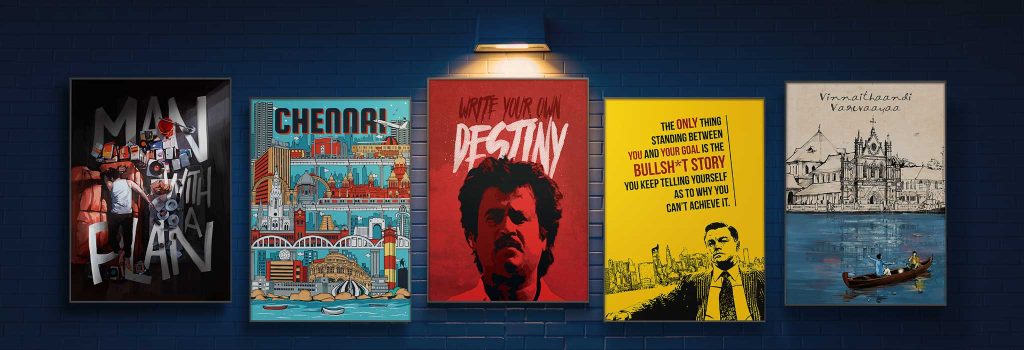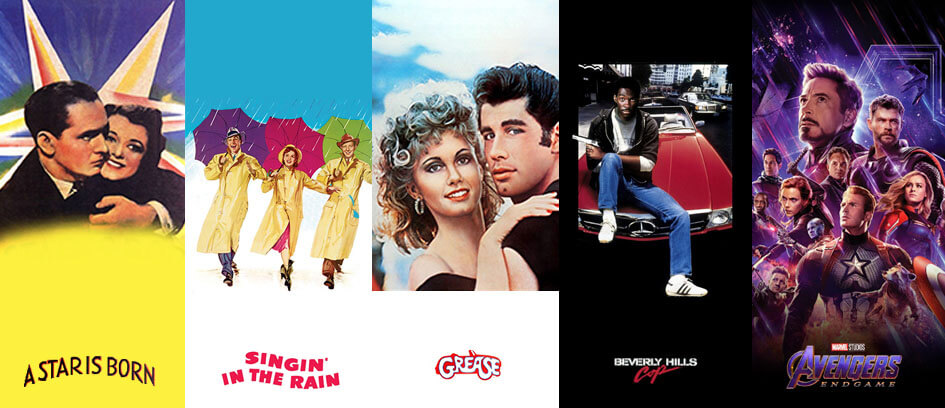Starting a movie poster collection can be a rewarding and exciting hobby. Movie posters are not only pieces of art but also tangible memories of cinematic history. They capture the essence of films and bring a piece of movie magic into your home. Whether you're a film enthusiast, an art lover, or simply looking for a new hobby, collecting movie posters offers a unique way to express your interests and decorate your space. This guide will help you get started on your journey to becoming a movie poster collector.

Research and Identify Your Interests
The first step in starting your own movie poster collection is to identify what you are passionate about. Movie posters come in various styles, genres, and eras, so narrowing down your focus will help you build a cohesive and meaningful collection. Consider the following questions:
- Do you have a favorite film genre, such as horror, science fiction, or romance?
- Are there specific directors, actors, or film series that you admire?
- Are you interested in vintage posters from the Golden Age of Hollywood, or do you prefer modern designs?
Once you have a clear idea of your interests, start researching the different types of movie posters. Learn about the history of movie posters, the various formats (such as one-sheets, lobby cards, and international posters), and notable artists and designers. This knowledge will not only enhance your appreciation of the posters but also guide your purchasing decisions.
Where to Find Movie Posters
There are several places where you can find movie posters to start your collection. Here are some options:
- Online Marketplaces: Websites like eBay, Etsy, and dedicated movie poster shops offer a wide range of posters. These platforms allow you to browse and purchase posters from sellers around the world.
- Specialty Stores: Many cities have stores that specialize in movie memorabilia, including posters. Visiting these stores can give you the opportunity to see the posters in person before buying.
- Auctions: Both online and in-person auctions can be excellent sources for rare and valuable posters. Keep an eye on auction house websites and local event listings.
- Flea Markets and Antique Shops: Sometimes, hidden gems can be found in flea markets and antique shops. These places often have unique and vintage posters at reasonable prices.
As you search for posters, be sure to verify the authenticity and condition of the items. Authenticity is crucial for valuable and collectible posters, so look for reputable sellers and check for details such as studio logos, print dates, and original folds or marks.
Research and Educate Yourself
Take the time to research and educate yourself about the world of movie posters. Learn about different printing techniques, poster sizes, and design styles prevalent in the industry. Familiarize yourself with the history of movie poster art and notable artists and designers. Explore online resources, books, documentaries, and exhibitions dedicated to movie posters to deepen your understanding and appreciation of the art form.
Establishing a budget is crucial when starting any collection. Determine how much you're willing to invest in acquiring movie posters and set realistic financial boundaries. Keep in mind that the value of posters can vary significantly based on factors such as rarity, condition, and demand. Start with a modest budget and gradually increase it as you become more experienced and confident in your collecting pursuits.
There are various sources for acquiring movie posters, ranging from online marketplaces to specialized dealers and auctions. Explore different channels and determine which ones best suit your preferences and budget. Popular online platforms like eBay, Etsy, and Amazon offer a wide selection of posters, including vintage and reproduction prints. Additionally, consider visiting local flea markets, antique shops, poster conventions, and film memorabilia stores for unique finds.
Verify Authenticity and Condition
When purchasing movie posters, prioritize authenticity and condition. Be wary of counterfeit or reproduction posters marketed as originals, especially when buying from online sellers. Look for reputable dealers and sellers who provide detailed descriptions, high-resolution images, and certificates of authenticity. Examine posters closely for signs of wear, damage, or restoration, as these factors can affect their value and collectibility.
Begin your collection by acquiring a few key pieces that align with your collection focus and budget. Start with posters that hold personal significance or represent iconic films in your chosen genre or era. As you build confidence and experience, gradually expand your collection by adding new acquisitions over time. Be patient and selective in your choices, prioritizing quality over quantity.
Once you've acquired posters for your collection, take care to display and preserve them properly. Invest in archival-quality framing materials, such as acid-free mats and UV-protective glass, to protect posters from damage and fading. Consider rotating posters periodically to prevent prolonged exposure to light and environmental factors. Display your collection in a dedicated space where you can appreciate and enjoy the artwork, such as a home theater room, office, or gallery wall.
Joining online forums, social media groups, and collector communities is a great way to connect with fellow movie poster enthusiasts. Share your collection, exchange knowledge and insights, and participate in discussions about poster collecting. Networking with other collectors can provide valuable tips, resources, and opportunities for buying, selling, or trading posters.
As you continue to grow your movie poster collection, stay curious and open to learning. Keep up-to-date with industry trends, new releases, and emerging artists and designers. Attend poster exhibitions, film festivals, and collector events to discover new posters and expand your network. Cultivate a lifelong passion for movie poster art and enjoy the journey of building a collection that reflects your love of cinema.
